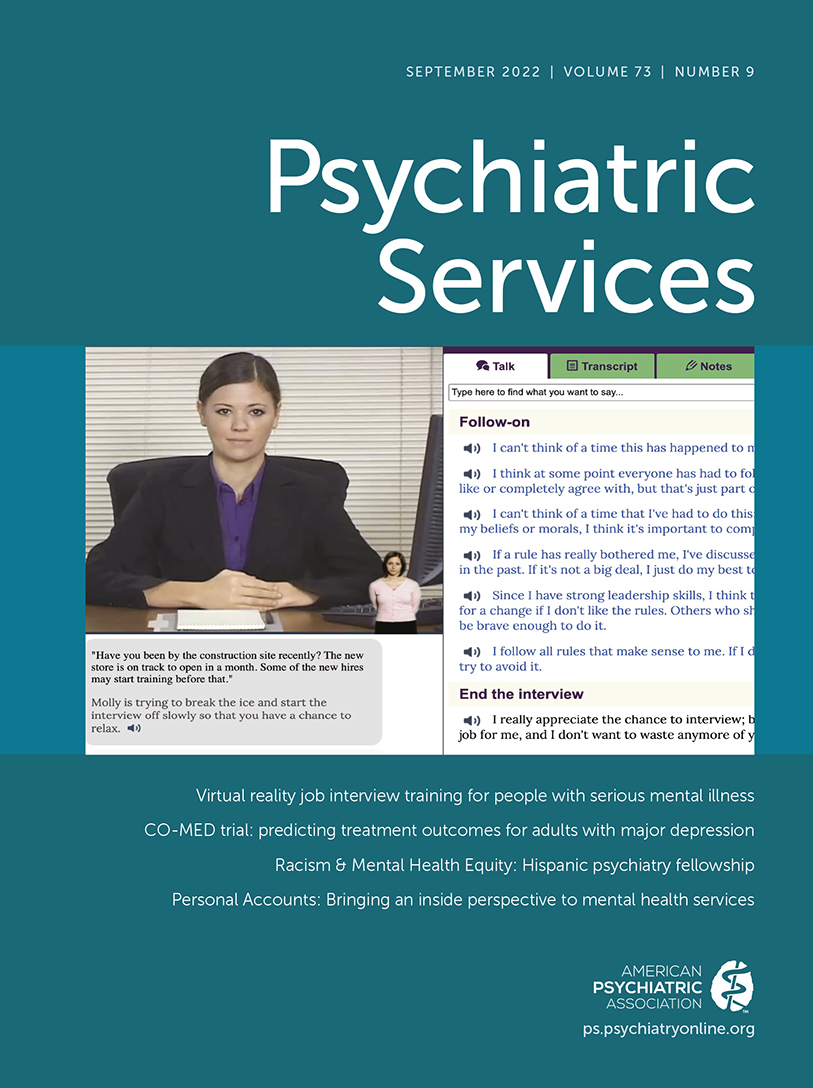Parity and Provider Networks
The 2008 Mental Health Parity and Addiction Equity Act marked a significant policy development that focused on specific insurance features—cost-sharing, treatment days, and elements such as utilization review—in order to reduce financial burdens and improve access to care through equalizing coverage with medical or surgical benefits. More recently, policy has focused on narrow networks (oig.hhs.gov/oei/reports/oei-02-17-00490.pdf), which, despite coverage parity, could undermine access to behavioral health care (U.S. Office of Inspector General OEI-02-17-00490, Sept. 2019). When providers do not participate in health plan networks, patients’ care is not covered or is covered at a reduced rate. Moreover, if patients must wait for in-network providers to become available, care may be delayed.
In this issue, Friedman and colleagues (1) examine how much families pay for out-of-network behavioral health. Their focus on balance billing, not just copayments and deductibles, is particularly novel. The study finds that the balance-billing costs for families that went out of network were relatively high—the equivalent of $1,067 per family in 2022, with adjustment for medical inflation and accounting for 33% of total out-of-pocket costs. Thus, the article highlights the importance of examining networks and out-of-pocket spending simultaneously and underscores the need to understand networks and parity more clearly.
Given the fragmentation of the U.S. health care system, perhaps having no uniform standard for network adequacy across types of coverage is not surprising. Medicare Advantage plans must abide by specific standards for 27 provider and 11 facility types, among them individual psychiatrists and inpatient psychiatric facilities. The time and distance standards for psychiatry are not as stringent as for primary care. In contrast, states determine the network adequacy standards for Medicaid managed plans within broad federal legal guidelines. In practice, states use metrics (www.commonwealthfund.org/medicaid-managed-care-database) ranging from travel time and distance, to minimum provider-to-enrollee ratios, to maximum appointment wait times. States set their own minimum standards, which can vary widely.
In May, the federal government released final regulations (45 CFR, RIN 0938-AU65) for network adequacy of private plans offered through the 30 federally run health exchange marketplaces. These rules, far more extensive than Medicare Advantage rules, include individual providers in 34 specialties, including psychiatry and, separately, outpatient clinical behavioral health. The accompanying standards (www.cms.gov/CCIIO/Resources/Regulations-and-Guidance) for the latter are the same as for primary care, but psychiatry standards are looser, with roughly double the time and distance to meet adequacy. Separate standards also exist for 11 types of facility services, including inpatient and residential behavioral health facilities, which are combined into one category. Appointment wait time standards will begin in 2024, with details pending.
Notably, the final regulations did not require that the minimum standards apply to every tier in a health plan. For example, when Preferred Provider Organizations offer participating providers in one tier and other providers in another, plans can meet the adequacy requirements with out-of-network providers, even though they cost more to patients.
This brings us back to the Friedman et al. analysis. To assess network parity, we will need estimates such as this study provides to examine out-of-network spending across specialties. We need more study of access to psychiatrists, who can treat individuals with the most severe conditions, including psychotic disorders, as well as to other types of behavioral health clinicians. We also need more analyses of parity in provider choice and wait times. Fortunately, more data should become available to help monitor these factors.
Ultimately, we need to pursue several policy avenues to achieve network adequacy. With greater provider shortages, requiring broader networks means expanding scope of practice, integrating delivery models with primary care, and adding supervised trainees to networks. Higher reimbursement rates are also likely, which would translate into higher insurance premiums and potentially greater premium subsidies. In addition, we need to understand how health plans can entice cash-only mental health providers into their networks more easily. What supports can plans offer to make this a sensible business decision for behavioral health providers? In the face of skyrocketing behavioral health demand, the network parity questions have become even more pressing.
1. : Quantifying balance billing for out-of-network behavioral health care in employer-sponsored insurance. Psychiatr Serv 2022; 73:1019–1026Abstract, Google Scholar



